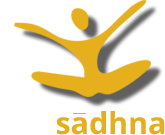Folk Dances of Gujarat: The ‘Garba’ dance of Gujarat has an important place in main folk dances of India. This dance represents the folklores of Gujarat. The women of Gujarat have given such prominent place to Garba that it is performed with devotion and respect on all religious occasions.
Garba begins from first day of ‘Navratri’ and is performed over 9 days. This dance is mostly performed by women. On the first day of’Shukla Paksha’ of Hindu month of’Ashwin’, the ‘Ghat’ (pitcher) for worshipping is decorated. The Garba ghat is made very beautiful and is decorated by painting flowers and leaves on it and an earthen lamp full of clarified butter (Ghee) is lit inside the ghat and then the ghat is worshipped. Women carry bedecked ghats on their heads and move in group to each other’s houses. On a particular place, they set down their ghats and form a ring around ghats.
The dance group has a leader called ‘Naika’ who first sings a line from the song and thereafter other women repeat the same. The speed (Gati), beat (Tal) and rhythm (Laya) of this dance are not very difficult. However, the movement of the body parts is very beautiful. The group of women first bends in one direction and then other. The dancers clap while bending down to feet. The women from Gujarat weave the rise and fall (Aaroh and Avroh) of song in a rhythm and dance in a very pleasant way. Once, the dance is over, the offering (Prasad) is distributed which is called ‘Salhani’. On the last day, the ghat is disposed off in river or pond or sea.
Just like Garba is a dance meant for women, the ‘Garbi’ dance is performed by men. This dance is also performed during Navratri for worshipping ‘Mother Goddess’. In this dance, a painting of ‘Mother Goddess’ is placed in the centre, an earthen lamp full of clarified butter (Ghee) is lit in front of it and recently sown barley in an earthen pot is kept next to it. The dancers perform with this painting in centre and all of them wear traditional Gujarati dress.
Like Garba and Garbi dances which are extremely popular, ‘Dandia Raas’ is also an important dance form. In this dance, men and women, both take part. They carry small batons in their hand and they dance in small circles. While dancing, the dancer strike the baton on the baton held by the other performer and maintain continuity of the beat. These batons are usually painted with different colours and embellished with bells which produce mellifluous sound while dancing.

